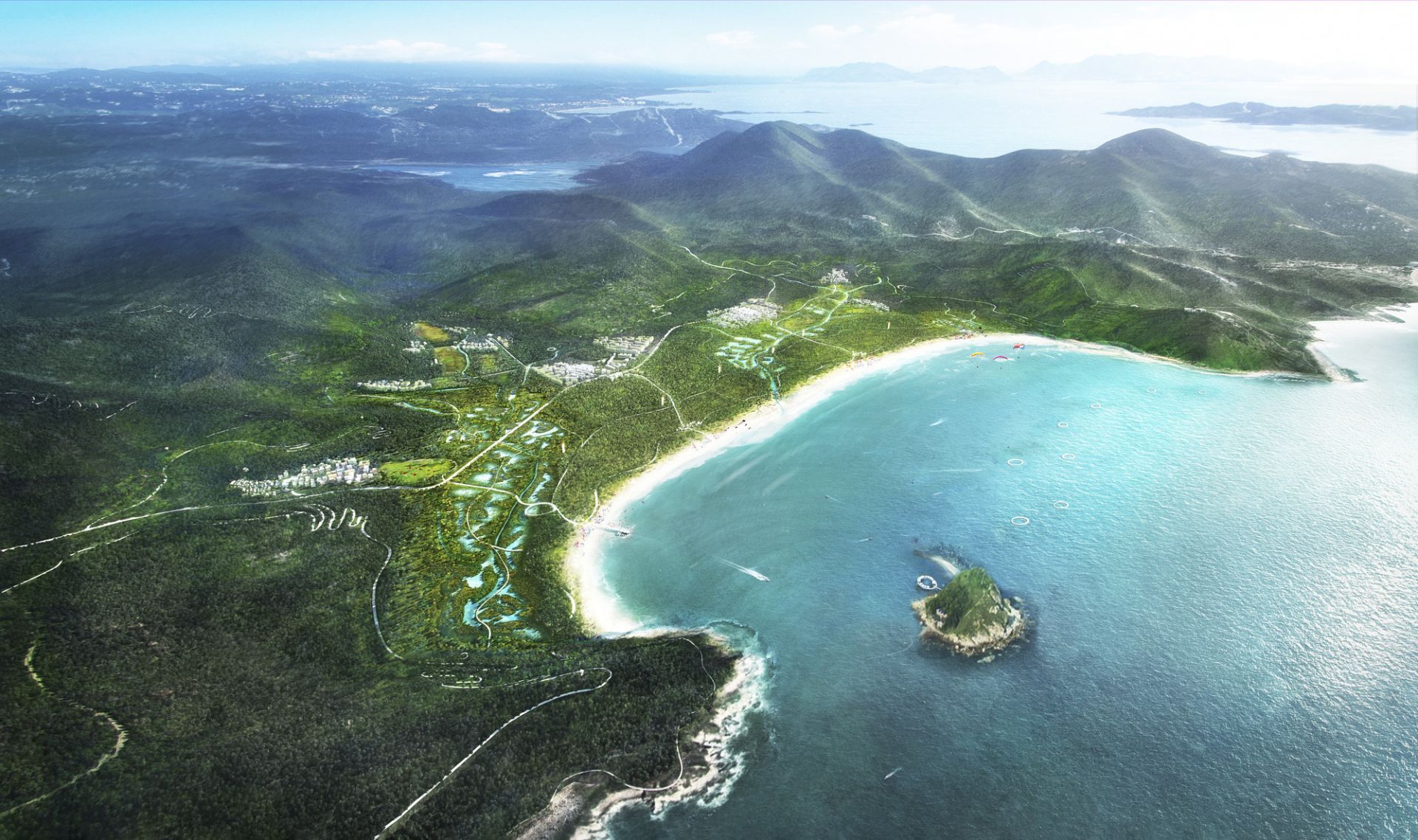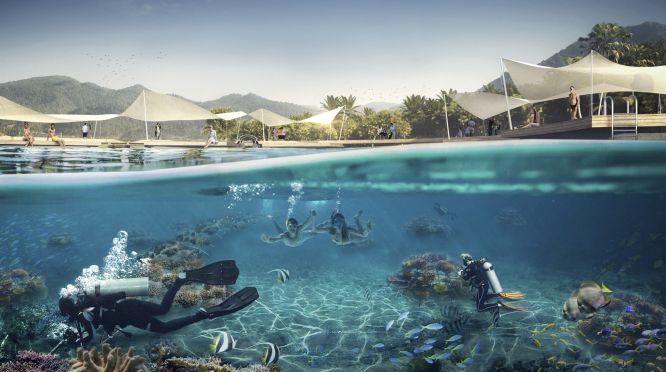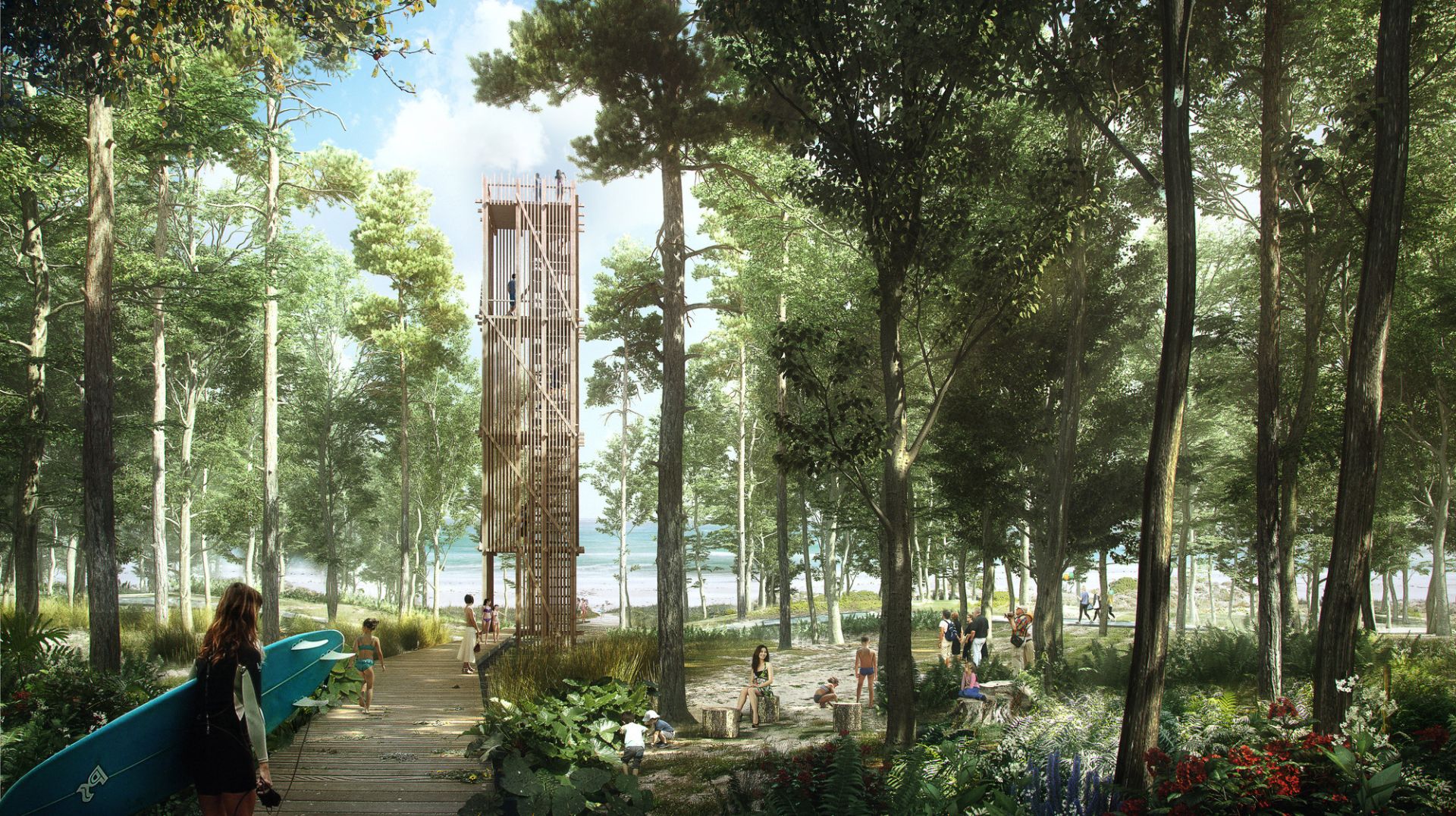Awards
- 2021 AILA National Landscape Architecture Award (International)
- 2021 IFLA APR Outstanding Award Unbuilt Projects: Disaster Response

Typhoon Mangkhut – one of the largest to hit Southern China – also destroyed vast areas of this coastal landscape, along with many buildings. Out of that adversity came an opportunity – for a new beginning and a more sustainable future.
As one of three winners in an international competition, our plan for Xichong’s future restores wetlands and mangrove forests while also building tourism and education.
Sustainable, community-driven ecotourism developments are located inland around existing villages – and away from environmentally sensitive areas. By limiting development and visitor numbers in conservation areas, we can protect local habitat and sensitive ecologies.
Our plan also includes a long-term resilience strategy for actively restoring the area while also mitigating disasters. Our strategy reinforces Xichong’s dynamic self-recovery system linking land, beach and sea – making the area truly ‘resilient by nature’ over time.
Local communities play an important role in our vision for a resilient Xichong – both in planning and operating the ecotourism sector and protecting and managing their surrounding environment. Under our community-driven model for the precinct, we create a perfect combination focusing on conservation and disaster resilience while also offering a unique local experience.







Scan this QR code with your phone to follow Hassell on WeChat.